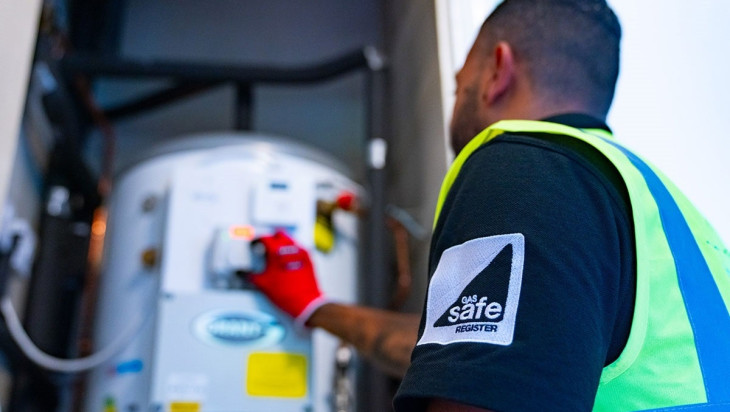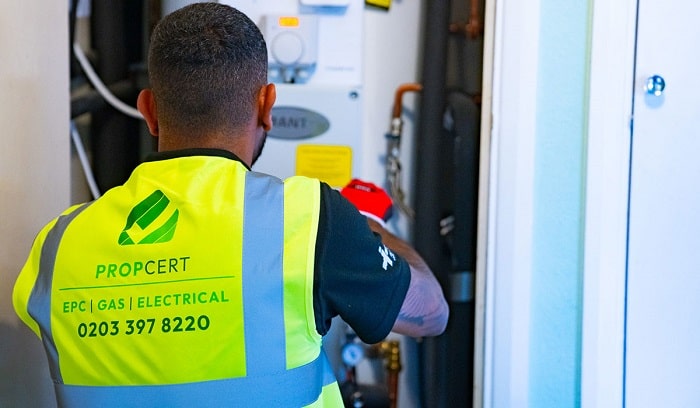
The term “condensing boiler” is quite commonly used in the UK. Everyone having a gas or oil boiler installed in their home must be familiar with this term, especially if the boiler was installed after 2005. In 2005, it was made compulsory for homes, under the Building Regulations, to replace the old conventional gas boilers with the new condensing boiler. The same condition was also applied to oil boilers in 2007. Since then, the installation of conventional boilers has been totally discontinued in the entire UK. The reason behind imposing this change was to reduce the carbon footprint and to increase the energy efficiency of the boilers.
While a reduction in carbon footprint makes it an environmentally friendly policy, the increased energy efficiency has significantly reduced the energy bill for the end users. The normal useful life of a boiler ranges between 10 to 15 years; hence, after the imposition of the policy of replacing old conventional boilers with condensing boilers, there should hardly be any boiler in the UK that is not a condensing boiler. Despite this fact, a very common question, often raised by consumers, is what a condensing boiler is, and how it is different from an old conventional boiler.
Keep reading this blog to find the correct and easy-to-understand answer to this very popular question.
A condensing boiler is a highly efficient type of boiler that saves a considerable amount of energy by utilizing the waste gases that would otherwise be expelled out of your home through the flue. In this way, the extra heat is reused for heating the water, which directly impacts the actual cost of gas or oil used by the boiler. This process of reusing the extra heat, which would otherwise be expelled out of your home, facilitates heating the water to the same temperature by using less volume of gas or electricity.
This has a dual impact. It increases the energy efficiency of your boiler and lowers the annual energy bill. On the other hand, the carbon footprint is drastically reduced. So, the main difference between a conventional old boiler and a condensing boiler is the reutilization of waste gases, which a traditional or non-condensing boiler used to throw out via flues.
Although building regulations governing the installation of condensing boilers have been in place since 2005, it is still essential to determine whether your boiler is condensing or non-condensing. To make sure yours is a condensing boiler, you need to inspect the flue. To remind you, a flue is a pipe installed in your home to eject hot and waste gases produced by the boiler during water heating. In the case of a conventional or non-condensing boiler, this pipe (flue) used to be metallic, as it was meant to vent out very hot gases.
On the contrary, if you have a condensing boiler installed in your home, the flue pipe would be made up of plastic or a similar material, instead of metal. The reason is that the gases meant to be expelled in the case of a condensing boiler are far colder as compared to those of a non-condensing boiler. So, the simple test is to check the flu. If the boiler is metallic, it is non-condensing; if it is made of plastic, it is a condensing boiler.

For a better understanding of how the water is heated in a condensing boiler, it would be appropriate first to recall the heating process of a traditional or non-condensing boiler.
The process of heating the cold water received in a condensing boiler from the main water supply is the same as that of a non-condensing boiler. The difference between them is the installation of a second heat exchanger. Here, the waste hot gases are reused instead of being released into the atmosphere:
There is a huge difference between the energy efficiency of a traditional non-condensing boiler as compared of the condensing boiler:
Like any other new product, condensing boilers also have a couple of disadvantages, though not many serious ones:
Under the building regulations, imposed by the UK Government in 2005, all homes are required to install condensing boilers. In other words, since then, the installation of traditional non-condensing boilers has been discontinued. The purpose of these regulations is to reduce the carbon footprint, as the old boilers generate a large quantity of Carbon Dioxide. Reduction in consumer energy bills by installing a condensing boiler is an added advantage of these regulations.
The condensing boilers are similar to traditional boilers, but the advantage of the new technology is that it utilizes the waste hot gases, which were being expelled out through flues, not only adding to pollution but also increasing the energy bills. The new technology of condensing boilers is capable of reusing the waste hot gases to pre-warm the colder water entering back into the boiler, causing less energy consumption to heat the water to the same temperature.
Fill the required information to order a gas safety certificate instantly.
Are you curious about your Gas Safety Certificate? With these simple steps, learn how to check its status and ensure your peace of mind.
Find out why your boiler is vibrating loudly. Explore causes, troubleshooting tips, and the importance of prompt repairs for a quiet and efficient heating system at home.
Gas engineers perform a gas safety check to ensure your gas appliances are safe. Read to learn what more you can expect from the gas safety check.
Learn about the importance of gas safety certificates for landlords and the legal consequences of not having a valid certificate.
Know your tenant rights: How long can a UK landlord leave you without hot water? Stay informed, assert your rights.
Every landlord in the UK is legally bound to follow gas safety regulations as per the Gas Safety (Installations and Use) Regulations 1998.
Fill out the following enquiry form and we will contact you as soon as possible.